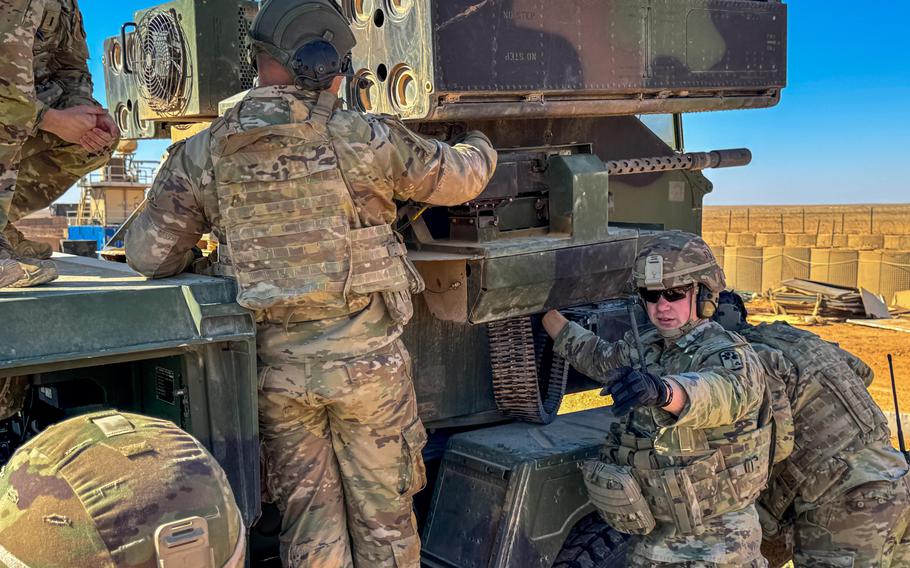
U.S. Army Staff Sgt. David Deering, with the 263rd Air Defense Artillery, Task Force Armadillo, calls for a tool as the team works on the Avenger air defense system's machine gun at al-Tanf Garrison, Syria, Feb. 26, 2025. (Fred Brown/U.S. Army)
U.S. troops in Syria are still tracking Islamic State terror cells while helping secure vast prisons full of militants, and it could be a while before the new government in Damascus is prepared to take over the job, analysts and former defense officials say.
President Donald Trump’s announcement last week that he would lift U.S. sanctions against Syria to give the country “a chance at peace” marked a major shift after decades of opposition to the fallen Assad regime.
He also urged the new leaders to assume responsibility for the ISIS prisons in northeastern Syria, where U.S. forces for years have trained and equipped the Syrian Democratic Forces, a Kurdish group that guards more than 9,000 ISIS fighters.
But even with the new Syrian government on board, it’s unclear whether such a handover will take months or years. Damascus lacks the resources to take over high-risk detention sites, and it would be doing so while rebuilding a country torn apart by civil war and battling armed groups bent on settling old sectarian scores.
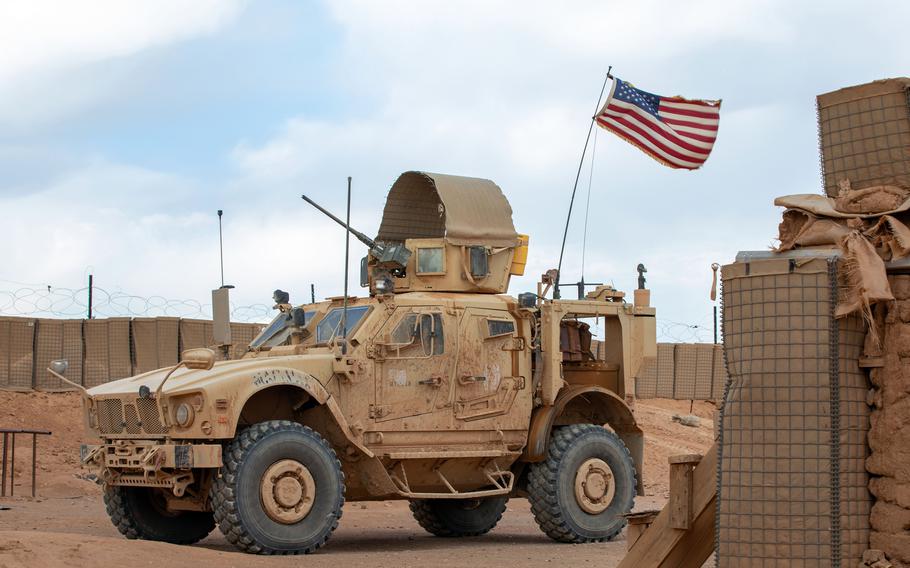
A U.S. Army joint light tactical vehicle and its crew assigned to the 10th Mountain Division, Task Force Armadillo, patrol the deconfliction zone near al-Tanf, Syria, March 18, 2025. It's unclear under what conditions and over what period of time U.S. troops would be withdrawn from Syria. (Tyler Matz/U.S. Army)
On Tuesday, Secretary of State Marco Rubio cast doubt on Syria’s ability to surmount those obstacles, telling a Senate hearing that the Damascus government may be weeks “from potential collapse and a full-scale civil war of epic proportions.”
Beyond ISIS, Assad regime loyalists and militants looking for revenge on communities that supported the regime are among the new transitional government’s many challenges.
“They are already struggling to consolidate security control over the majority of western Syria,” Dana Stroul, director of research at the Washington Institute for Near East Policy and a Syria analyst, said last week. “These are 9,000 hardened ISIS fighters. We’ve seen SDF struggle with this mission. It’s not an offensive operation. It’s a totally different skill set.”
The Pentagon, which surged forces to Syria following the Hamas attack on Israel in 2023, announced plans last month to reduce its footprint. Several bases will consolidate and troop numbers are expected to drop to fewer than 1,000 in the coming months.
Meanwhile, the SDF has agreed to merge with national forces under a U.S.-backed deal signed in March, further complicating the transfer of responsibilities.
The pact stipulates that they will work to complete the merger by the end of the year, at which point the U.S. may reconsider its presence in the country.
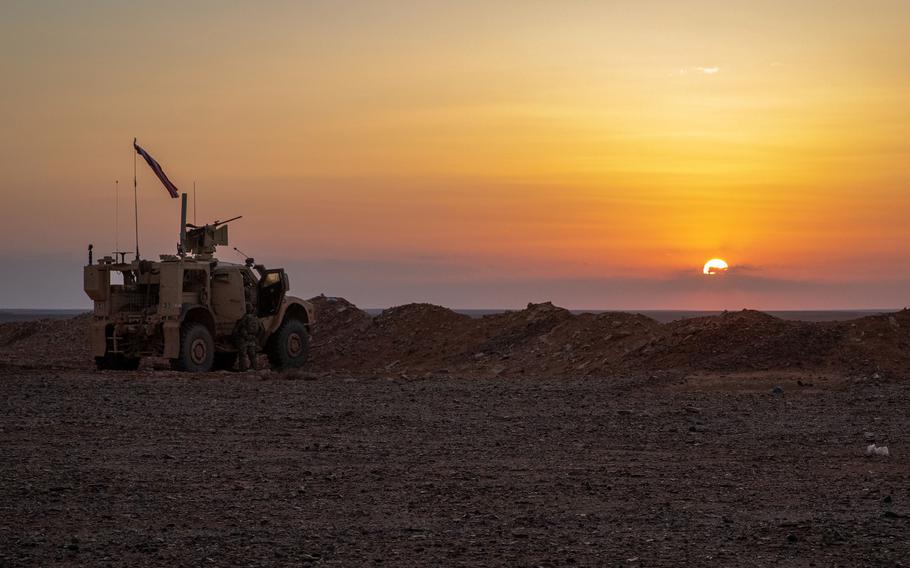
A Joint Light Tactical Vehicle and its crew assigned to 10th Mountain Division, Task Force Armadillo, set up a perimeter during a meeting with members of Syrian partner forces in the deconfliction zone at al-Tanf, Syria, March 14, 2025. (Tyler Matz/U.S. Army)
“(The agreement) can be, I think, a way of beginning to think about what our timing might be,” said retired Gen. Joseph Votel, former head of U.S. Central Command.
American security assistance has historically flowed to the SDF as part of the Defeat ISIS mission. The change in government means the U.S. may revisit that policy and consider a broader security arrangement with Syria.
“This is a step towards normalizing our relationship with Damascus: the eventual return of an ambassador, the potential reestablishment of an embassy there,” Votel said of Trump’s recent actions. “And of course with that will come things like security cooperation and other defense-related things. I think those are longer-term.”
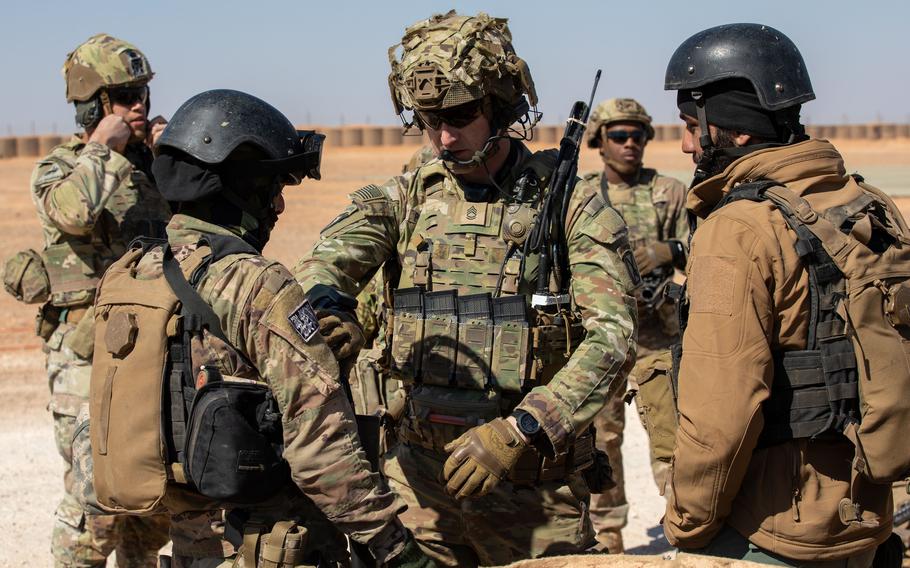
Syrian partner forces have their gear checked by Sgt. 1st Class Etienne Perrault, a platoon sergeant assigned to the 10th Mountain Division, Task Force Armadillo, before an air assault training at al-Tanf Garrison, Syria, on Feb. 25, 2025. (Fred Brown/U.S. Army)
On the ground, ISIS appears to be recovering after collapsing in the immediate aftermath of the regime change. This week, the terrorist group struck the interim Syrian government for the first time, according to the Washington Institute, setting off a car bomb that left five dead.
A recent Pentagon inspector general report described the interim government’s counterterrorism capabilities as “nascent,” noting that while Syrian forces had thwarted an attack earlier this year, they lack advanced air defense systems and are still learning to operate complex weapons platforms.
The report also noted that in the near term, the interim government is likely to focus on consolidating power rather than directly pursuing ISIS.
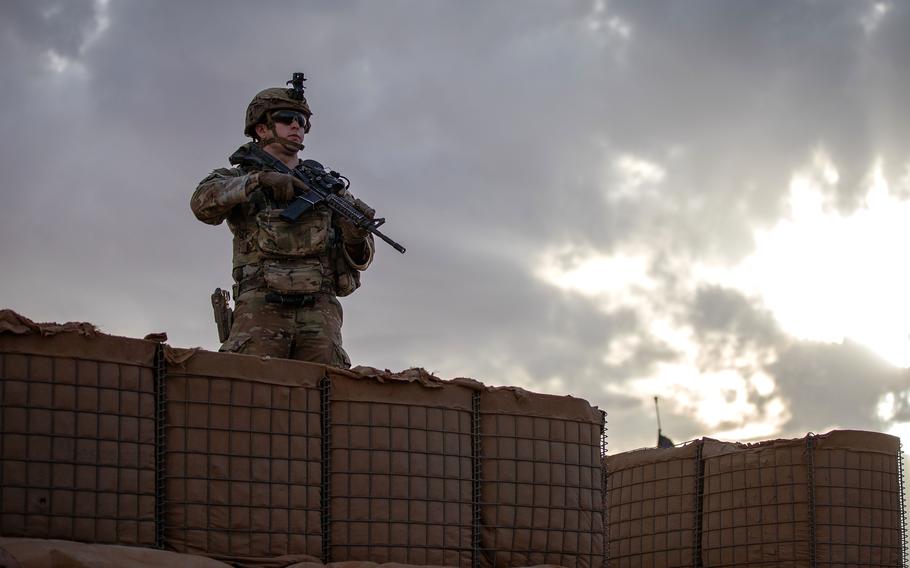
U.S. Army 1st Lt. Bryson Morrow, with 10th Mountain Division, Task Force Armadillo, pulls security during a patrol in the deconfliction zone near al-Tanf, Syria, March 18, 2025. (Tyler Matz/U.S. Army)
American sanctions relief could make ISIS responsibility a greater priority for Damascus, said Qutaiba Idlbi, a senior fellow who leads the Atlantic Council’s work on Syria.
While the U.S. continues to share intelligence with Damascus about terrorist targets, the new government’s ability to equip and pay troops will be critical to any long-term security transition.
“To recruit volunteers, you need to be able to pay them,” Idlbi said. “If we want the new Syrian government to carry the mission of defeating ISIS, they need to have the resources to do that properly.”
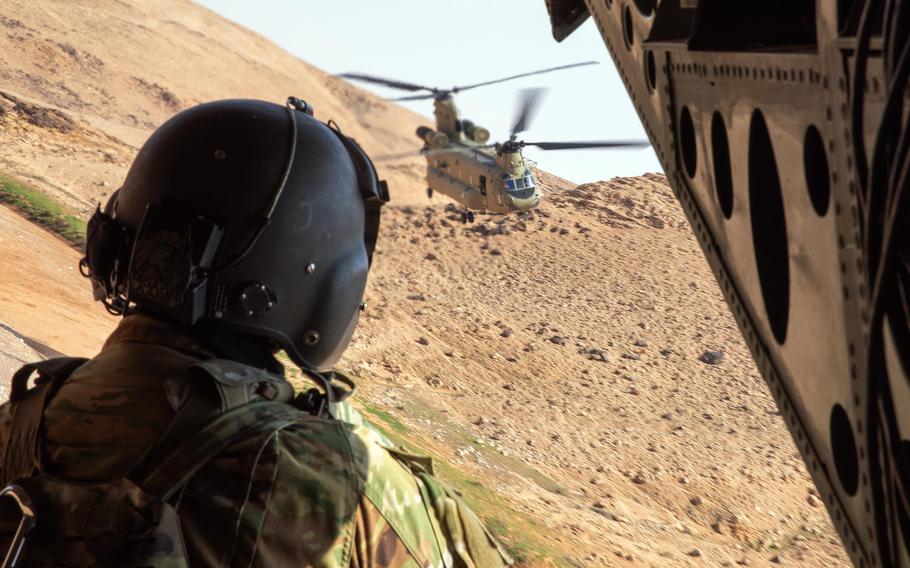
U.S. Army 1st Sgt. James Howard, assigned to Task Force Cardinal, monitors flight operations and surroundings during a flight over southeastern Syria on March 6, 2025. (Tyler Matz/U.S. Army)